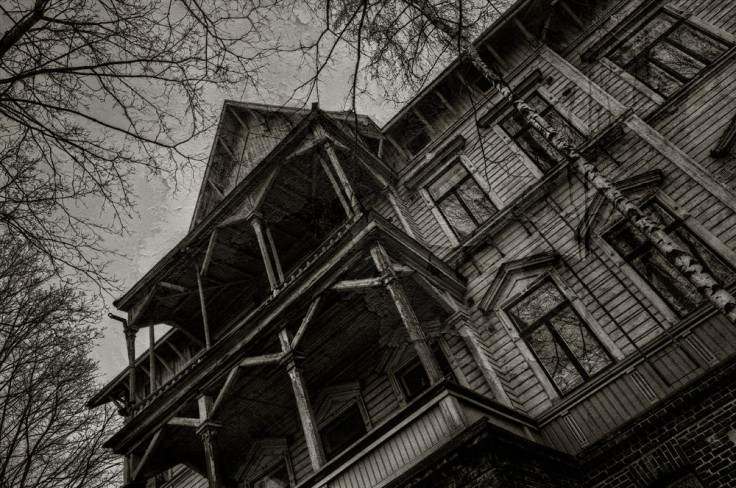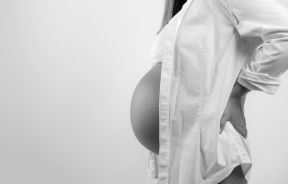Halloween 2015: Infrasound And What Really Makes A House Feel Haunted

With the ghastly specter of Halloween approaching us this week, Medical Daily will be exploring the science behind some of the more terrifying experiences in our day-to-day lives via a mini-series of articles. Enjoy!
A Haunted Mansion
Why you decided to honor your great-grandfather's will and stay in his 18th century gothic mansion for one night, you’ll never know. There’s no turning back now, though.
As you make your way through the sprawling, empty domicile, you notice the walls are adorned with portraits of creatures you’re pretty sure have never existed, and the lighting is impossibly dim. Reaching the top of the spiraling staircase that leads to your room, you’re stopped dead by an unsettling feeling that slithers along your skin. You try to shake it off, but your body only replies in kind by shivering and shuddering — why has it gotten so much colder on this floor?
You walk at a glacial pace to your room, hoping and failing to avoid the creaky floorboards that ache with every step, almost as if they were a living record of the centuries of agony felt by the home’s previous inhabitants. Your breath quickens and you suddenly feel foggy and dizzy. You gently swing open the door to the bedroom, and that’s when you spot something out of the corner of your eye. Just as soon as you try to focus on it, though, it’s gone.
Tonight is going to be a long night.
Ghost In The Machine
Aside from the obvious reason — ghosts — could there be a natural explanation for these disturbing sensations and glimpses of the preternatural? In a 1998 paper, British researcher and engineer Vic Tandy, along with Tony Lawrence, both faculty members of Coventry University, suggested there could be a partial one.
The two relayed an experience of Tandy’s at the medical equipment manufacturing facility where he once worked during the 1980s. The facility was supposedly haunted and Tandy did see the occasional “odd event” or two, but he paid it no mind until he stayed late one time. That night, Tandy began feeling a cold sweat and the unmistakable presence of someone else in the room. Then he saw a silent gray apparition appear to his left, “on the periphery of his vision,” only for it to disappear as quickly as it had arrived.
The next day, he brought in a foil fencing blade to finish working on. Placing it in a vice, he noticed that the blade began to wildly vibrate and that his feelings of unease returned right along with it. Being a man of science, he theorized that both incidents were somehow connected. Sure enough, after moving the blade along the length of the laboratory, he discovered the source of the vibration — a new fan installed in the nearby cleaning room. The unique dimensions of his lab, coupled with the fan’s movement, created a sound frequency that was just below the point where humans can hear (around 19 hertz per second) but which still affected the environment around it. Once Tandy modified the fan, both the vibrations and the haunting seemingly ended.
Called infrasound, researchers have long speculated about its unseen effects on people. It’s even been blamed for wind turbine syndrome, a set of symptoms like anxiety or depression created by the presence of windmills, which do indeed generate infrasound.
Before his death in 2005, Tandy embarked on a series of investigations of supposedly haunted locations like Warwick Castle, and he again found high levels of infrasound naturally created by the environment. In 2003, researchers recruited 750 people to listen to live music at a London concert hall, cleverly lacing certain songs with infrasound without the knowledge of their audience. They found 22 percent of people reported more unusual experiences like chills or feelings of sorrow when the infrasound songs were played as opposed to the normal songs. “These results suggest that low frequency sound can cause people to have unusual experiences even though they cannot consciously detect infrasound,” study author and psychologist Richard Wiseman told the AP at the time.
Unfortunately, like the ghost stories Tandy once dismissed, there’s a lot of missing gaps in the infrasound/haunting connection.

A Scientific Haunting
In 2006, UK psychologist Christopher French and others decided to design their own haunted house by rigging up a dim nondescript room with hidden devices that could generate both infrasound and complex electromagnetic fields (EMF), another naturally occurring phenomenon that has been theorized to create sensations of paranormal activity. They then convinced 79 people to spend 50 minutes in the room alone, asking them to jot down any unusual feelings they felt as well as where they felt it.
They certainly succeeded in creating a haunting: 80 percent felt dizzy or odd by the time they left; 35 percent felt tingling sensations; 22 percent felt another presence in the room; and a very peculiar 5 percent felt sexually aroused. Unfortunately, there was no rhyme or reason to where these feelings happened. The locations that contained infrasound and EMF generated no more odd sensations than the rest of the room, and the only predictors of paranormal activity were the participant’s preexisting belief in the supernatural and the degree to which they reported prior psychological experiences often associated with temporal lobe epilepsy, such as absentmindness. These “temporal lobe signs” have been linked to both religious and supernatural experiences.
Because the participants were told before they entered the room that they might feel something unusual (though not that the room was haunted), French and his colleagues theorized that the most likely explanation for their experiences was simply the power of suggestion coupled with an appropriately “scary”setting. Just as an aside, wind turbine syndrome, while still held onto as a real physical condition by many of its sufferers, is now largely considered a psychosomatic disorder created by the fear and anxiety that turbines/wind farms are somehow hazardous to human health, and not a byproduct of infrasound.
So what really makes a haunted house feel haunted? Sorry to disappoint, but the answer is very likely our own expectations.



























